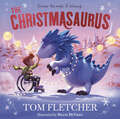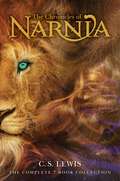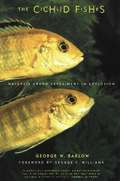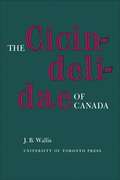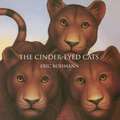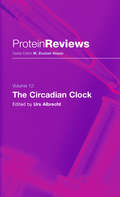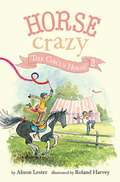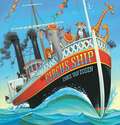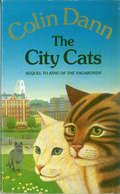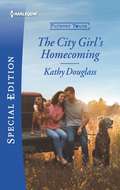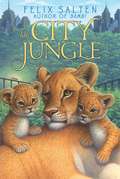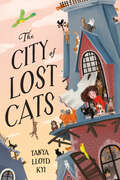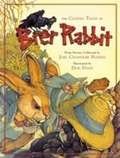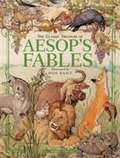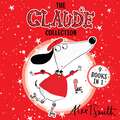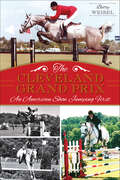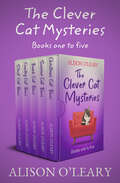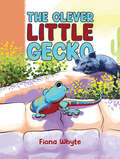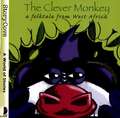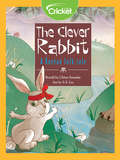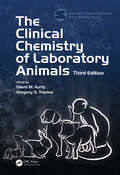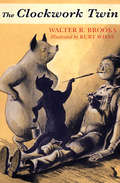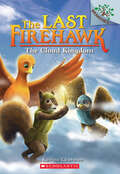- Table View
- List View
The Christmasaurus
by Tom FletcherMove over, Rudolph! It's time for the Christmasaurus to lead Santa's sleigh.The Christmasaurus is a dinosaur who lives with Santa Claus and his elves at the North Pole. More than anything, he wants to fly with Santa's reindeer on Christmas Eve! But no matter how hard he tries, he can't seem to figure out how to fly. . . . Until one Christmas Eve, when he meets a young boy in a wheelchair who has a wonderful idea. What if all the Christmasaurus needs is someone to believe in him? With playful, rhyming text, international bestselling author Tom Fletcher adapts part of his novel into a heartwarming picture book about friendship and the power of believing that is sure to become a new Christmas classic.
The Chronicles of Narnia Complete 7-Book Collection: The Classic Fantasy Adventure Series (Official Edition) (Chronicles of Narnia #1 - 7)
by C. S. LewisGive the magic of Narnia this holiday season and experience all the adventure of C. S. Lewis’s epic fantasy series in this latest official edition from HarperCollins.This collection contains all seven books in the classic fantasy series The Chronicles of Narnia without art, to appeal to older readers. This special ebook edition includes an introduction by C. S. Lewis's stepson, Douglas Gresham, and full text and art for Lewis's very first work—Boxen!Experience C. S. Lewis's The Chronicles of Narnia in its entirety—The Magician's Nephew; The Lion, the Witch and the Wardrobe; The Horse and His Boy; Prince Caspian; The Voyage of the Dawn Treader; The Silver Chair; and The Last Battle. This bundle comes with a special introduction by Douglas Gresham, C. S. Lewis's stepson, for a behind-the-scenes look at Lewis while he was writing the book. The Chronicles of Narnia has become part of the canon of classic literature, drawing readers of all ages into magical lands with unforgettable characters for over sixty years. Epic battles between good and evil, fantastic creatures, betrayals, heroic deeds, and friendships won and lost all come together in this unforgettable world.And then discover the world before Narnia with Boxen, a collection of stories written by C. S. Lewis and his brother when they were children, with the authors' own delightful illustrations. For every reader who has been captivated by the magic of Narnia, Boxen will open a window to another enchanted land and offer the first glimmer of C. S. Lewis's amazing creativity.
The Cichlid Fishes: Nature's Grand Experiment in Evolution
by George W. BarlowCichlid fishes are amazing creatures. In terms of sheer number of species, they are the most successful of all families of vertebrate animals, and the extent and speed with which they have evolved in some African lakes has made them the darlings of evolutionary biologists. With warmth and wit, Barlow describes the remarkably high intelligence of these fishes, their complex mating and parenting rituals, their bizarre feeding and fighting habits, and their highly unusual adaptations. A celebration of their diversity, The Cichlid Fishes is also a marvelous exploration of how these animals might help resolve the age-old puzzle of how species arise and evolve.
The Cicindelidae of Canada (The Royal Society of Canada Special Publications)
by J. B. WallisThe bright colours and fascinating ways of this small but important group of insects attract immediate attention. Cicindelidae, or tiger beetles, are frequently encountered, but they are difficult to capture, since they are alert and elusive, and still more difficult to identify. This intensive study of the distinguishing characteristics, geographical distribution and variation, and habits and habitats of tiger beetles in Canada—the culmination of the author's main interest for many years—will provide a much-needed reference work. Studies of insect families are scarce, and professional and amateur entomologists alike will find this book a most useful aid in their investigations and a stimulus to further research.
The Cinder-Eyed Cats
by Eric RohmannFrom the creator of the Caldecott Honor winner Time Flies, here’s a little boy’s journey to a tropical dream world. Magnificent oil paintings and rhyming text bring to life a mysterious island where cinder-eyed cats move like shadows, boats float above the ocean, whales fly across the dawn sky, and a parade of fish dances in the light of a campfire.
The Circadian Clock
by Urs AlbrechtThe purpose of this volume is to provide historical and current information about the circadian clock, molecular properties of clock components and their roles in health and disease. The Circadian Clock aims to give an integrated view how the biochemistry and physiology of an organism is organized over the 24 hours of a day and how disturbance of clock function can lead to disease. Outline: - Historical overview - Transcriptional Regulation of circadian clocks - Non-Image Forming Photoreception - Interplay Between Circadian Clocks and Metabolism - Clocks, Cell Cycle and Cancer - Circadian Neural Networks - Circadian Neural Networks - Circadian Clocks and Sleep a) Clocks and Sleep in animals b) Homeostatic and Circadian Regulation of Human Sleep - Clocks, Brain Function and Dysfunction - Systems Biology and Modeling of Circadian Rhythms - Comparative Clocks.
The Circus Horse
by Alison Lester Roland HarveyIn the second volume of this charming series, friends Bonnie and Sam are determined to win the local talent contest. And they know that learning to do trick riding on horseback will secure victory. When the girls pick a real-live horse to practice on, all bets are off. The excitement will keep young readers turning pages, as Bonnie and Sam discover that some things are even better than winning.
The Circus Ship
by Chris Van DusenWhen a circus ship runs aground off the coast of Maine, the poor animals are left on their own to swim the chilly waters. Staggering onto a nearby island, they soon win over the wary townspeople with their kind, courageous ways. So well do the critters blend in that when the greedy circus owner returns to claim them, villagers of all species conspire to outsmart the bloated blowhard. With buoyant rhymes and brilliantly caricatured illustrations evoking the early nineteenth century, Chris Van Dusen presents a hugely entertaining tale about the bonds of community — and a rare hidden-pictures spread for eagle-eyed readers of all ages.
The City Bears Adventures (D. J. Dillon Adventure #2)
by Lee RoddyIn the Sierra Nevada Mountains, a thirteen-year-old Christian boy and his new friend discover that keeping a bear cub as a pet creates problems as the cub matures.
The City Cats
by Colin DannFrom the creator of the award-winning THE ANIMALS OF FARTHING WOOD books, comes the CITY CATS series: incredible animal adventures starring furry felines, Sammy and Pinkie. Big city cats Sammy and Pinkie are living in the fast lane. Pinkie's expecting kittens and proud Sammy is top cat of the neighbourhood - but how long will their good life last?
The City Girl's Homecoming (Furever Yours #5)
by Kathy DouglassEight dogs, eight cats…and one ornery cowboy!Megan Jennings just found the ideal temporary home for sixteen suddenly displaced pets. Too bad the farm’s owner isn’t giving the two-legged, former New York attorney the same warm welcome. A city girl broke Cade Battle’s heart and no way the gun-shy cowboy’s trusting in the feelings Megan awakens. But after being orphaned as a teenager, Megan knows she’s finally found her forever family. Can she make Cade believe it, too?
The City Jungle
by Felix Salten Whittaker ChambersGet to know the lives and longings of animals in a city zoo in this time-honored tale from the author of Bambi.The animals of the city zoo miss their homes. While they appreciate the company of one another, they have a fierce longing to be free of the daily visitors, the city sounds--and most of all, the bars to their cages. Vasta the mouse is the only animal who is not behind bars. She uses her freedom to travel from cage to cage, visiting Yppa the orangutan and her young son Tikki, Hella the proud lioness and her two cubs, Mino the crazy fox, Pardinos the friendly elephant, and Hallo the tame wolf. The zookeepers and visitors have no idea what life is really like in this city jungle, but Felix Salten's depiction of these animals' stories is brought vividly to life in this beautiful repackage.
The City of Lost Cats
by Tanya Lloyd KyiA stubborn young girl named Fiona stumbles upon an abandoned house full of stray cats, just as it is threatened by a demolition team, a leadership crisis, and two potentially malicious parakeets. Can Fiona save the house and all its inhabitants? A new middle-grade novel by critically acclaimed author Tanya Lloyd Kyi.When Fiona wanders into an abandoned mansion down by the harbor, she discovers the house is full of stray cats (and two chaotic parakeets). Fiona feels a great deal of sympathy for the animals; she understands what it's like to need a safe home. Ever since her parents died, she's been struggling to adjust to the tiny apartment where she and her Aunt Tanis now live. And Aunt Tanis has little time to spare for Fiona, between her job at The Municipal Hall and her horrible, hair-gelled boyfriend. When the mansion is threatened by a demolition team, Fiona is determined to save "The City" and its residents. But the cats have their own priorities. Cot (short for Cottonball Fluffikins Magnificent III, a name he refuses to acknowledge) has lived in the mansion for two years and is the self-proclaimed king. He's convinced the demolition effort has been organized by the recently arrived parakeets. Those birds have got to go! Cot's feline rival, Piper, is sure she can intimidate the demolition team and force them to leave, if Fiona will simply stay out of her way. And the parakeets . . . well, the parakeets just want to go home.As the demolition team begins tearing down the house next door, Fiona looks for any help she can find — at the library, the butcher shop, and even at The Municipal Hall. Can the efforts of one small girl and an assortment of animals stop a luxury condo development? Can they create something better in its place? It's going to take some quick thinking on the part of Fiona, not to mention the cooperation of all the cats, to give The City a future.
The Classic Tales Of Brer Rabbit
by Joel Chandler HarrisThis Courage Classic is reformatted into a smaller trim size and a lower price sure to make them necessities in any library. Beautiful, rich, and vibrant illustrations accompany these classic tales and make them treasures for all to read. Don Daily’s exquisitely detailed illustrations make this hardcover series a great value. Retold from Joel Chandler Harris’sUncle Remus: His Songs and Sayings, children of all ages will laugh at the adventures of Brer Rabbit, Brer Fox, and Brer Bear.
The Classic Treasury Of Aesop's Fables
by Don DailyGet in step with the colorful animals that race, waddle, and leap through these pages! From a fast-footed monkey to a two-timing fox, each creature has a story to tell and a moral to teach. <P><P> These famous tales tickle the imagination and teach simple truths, ones that children and adults face every day. Inside are twenty classic fables, includingThe Tortoise and the Hare, The Goose Who Laid the Golden Eggs, andThe City Mouse and the Country Mouse. Passed from generation to generation, Aesop's best-loved fables are presented here with beautiful illustrations that bring these naughty, bold, brave, and lovable creatures to life.
The Claude Collection: 9 Books in 1 (Claude)
by Alex T. SmithThe first nine audiobooks in the bestselling adventure series, all about Alex T. Smith's unforgettable canine hero, Claude. Now the star of his very own TV show on Disney Junior and ITVBe! In Claude in the City, Claude and Sir Bobblysock go to the city for the very first time. They have tea in a café, go shopping and visit a museum. It is all very normal until ... Claude accidentally foils a robbery and becomes the local hero! In Claude on Holiday, Sir Bobblysock and Claude go on holiday for the very first time. They build sandcastles, eat ice cream and sunbathe. It is all very normal until ... Claude meets a band of pirates and discovers buried treasure. In Claude at the Circus, a walk in the park leads to a walk on a tightrope when Claude joins a circus, throws custard pies, and becomes the star of the show.In Claude in the Country, a quiet nature walk in the country turns into a busy day on the farm when Claude ends up mucking out the pigs, feeding the chickens, and lassoing a fearsome bull!In Claude in the Spotlight, a gentle stroll through town leads to leg kicking and bottom shaking as Claude dances his way into the theatre and straight into the spotlight!In Claude on the Slopes, Claude goes from throwing snowballs and making snowmen to causing an all-out avalanche!In Claude: Lights! Camera! Action!, Claude discovers a film set right in his very own town! When the two lead actors are injured, Claude and Sir Bobblysock are asked to take their places. Can they become movie stars with just the simple addition of a wig? Of course they can!In Claude Going for Gold!, Claude and Sir Bobblysock take part in the Stonking Great Big Sports Day at their local sports centre! But Claude's doggy paddle isn't quite fast enough, and he's not quite as good at gymnastics as he thought he might be. Then some robbers steal the big gold trophy and Claude chases them - can he run fast enough to catch them?In Santa Claude, Claude and Sir Bobblysock think they've caught a burglar coming down the chimney on Christmas Eve. They clap on the handcuffs and turn on the lights. Oh no! It isn't a burglar - it's none other than Santa Claus himself! Now the key for the handcuffs is lost and it's up to our two heroes to deliver all the presents before midnight...
The Cleveland Grand Prix: An American Show Jumping First (Sports)
by Betty WeibelHome to inventors of the first automobile, airplane and professional baseball team, Ohio is also the birthplace of the first horse show jumping grand prix in the Western Hemisphere. Longtime fans can relive the exciting victories of some of the finest horses and riders in history, while newcomers can experience the Cleveland Grand Prix's glory years as the premier summer social tradition for thousands of spectators. From harness racing to fox hunting, saddle up with equestrian authority Betty Weibel as she explains how this picturesque corner of the Chagrin Valley grew into a world-class horse sport hub.
The Clever Cat Mysteries Boxset Books One to Five (Cat Noir)
by Alison O’LearyFive mystery novels in one volume: Follow the adventures of Aubrey the jaded tabby cat as he eats, sleeps, and sniffs out two-legged predators . . . He may be a pampered house pet now, but he still knows his way around the streets—and in these five sharp-witted novels, Aubrey the cat recounts his crime-solving exploits. Includes:Street Cat Blues Finally freed from the rescue centre and settled in his forever home with Molly and Jeremy, Aubrey considers everyone a potential suspect when an elderly neighbour gets put down.Country Cat Blues When Aubrey moves to the village of Fallowfield with his family, he&’s keen to explore the English countryside. But a murder shatters the idyllic peace, and Aubrey isn&’t happy when an eccentric local is accused. After all, he&’s been a good friend to the local felines . . .Beach Cat Blues Cats can smell trouble a mile away. So Aubrey and his friend Vincent know something sinister is happening at the care home where they&’ve been serving as part of a visiting-pet program . . .Summer Cat Blues Aubrey and Vincent are enjoying a short break at a family estate that&’s just been converted into a luxury hotel and spa. That is, until a body is found floating in the pool—then it&’s time to get to work.Christmas Cat Blues When an annual charity dinner becomes a murder scene, Aubrey the cat donates his sleuthing services . . .
The Clever Little Gecko
by Fiona WhyteWhen a curious cat meets a little gecko searching for shade and bugs to eat, they strike a bargain that leads to an unlikely friendship. As the gecko helps the cat find true peace and comfort in their home, they both learn the value of second chances and the rewards of mutual understanding. Follow the heartwarming journey of the cat and the clever little gecko as they create a purrfect life together in this touching tale of companionship and selflessness.
The Clever Monkey A folktale from West Africa: A Folktale From West Africa (Story Cove Ser.)
by Rob ClevelandA West African tale in which two cats argue over some cheese and a clever monkey, who offers to help, manages to get most of the cheese for himself.
The Clever Rabbit: A Korean Folk Tale
by Chitra SoundarA greedy tiger roamed the forest looking for food. One day he came upon a rabbit. But the rabbit conitnued to outsmart the tiger and not get eaten. "Rabbits are dangerous," thought the tiger. "I must warn everyone about them."
The Clinical Chemistry of Laboratory Animals
by David M. Kurtz Gregory S. TravlosKey features: Serves as the detailed, authoritative source of the clinical chemistry of the most commonly used laboratory animals Includes detailed chapters dedicated to descriptions of clinical chemistry-related topics specific to each laboratory species as well as organ/class-specific chapters Presents information regarding evaluation and interpretation of a variety of individual clinical chemistry end points Concludes with detailed chapters dedicated to descriptions of statistical analyses and biomarker development of clinical chemistry-related topics Provides extensive reference lists at the end of each chapter to facilitate further study Extensively updated and expanded since the publication of Walter F. Loeb and Fred W. Quimby’s second edition in 1999, the new The Clinical Chemistry of Laboratory Animals, Third Edition continues as the most comprehensive reference on in vivo animal studies. By organizing the book into species- and organ/class-specific chapters, this book provides information to enable a conceptual understanding of clinical chemistry across laboratory species as well as information on evaluation and interpretation of clinical chemistry data relevant to specific organ systems. Now sponsored by the American College of Laboratory Animal Medicine (ACLAM), this well-respected resource includes chapters on multiple laboratory species and provides pertinent information on their unique physiological characteristics, methods for sample collection, and preanalytical sources of variation for the particular species. Basic methodology for common procedures for each species is also discussed. New Chapters in the Third Edition Include: The Laboratory Zebrafish and Other Fishes Evaluation of Cardiovascular and Pulmonary Function and Injury Evaluation of Skeletal Muscle Function and Injury Evaluation of Bone Function and Injury Vitamins Development of Biomarkers Statistical Methods The Clinical Chemistry of Laboratory Animals, Third Edition is intended as a reference for use by veterinary students, clinical veterinarians, verterinary toxicologists, veterinary clinical pathologists, and laboratory animal veterinarians to aid in study design, collection of samples, and interpretation of clinical chemistry data for laboratory species.
The Clockwork Twin (Freddy the Pig #5)
by Walter R. BrooksThe international sensation for readers young and old, Freddy the Pig, is back! Adoniram lives with his cruel aunt and uncle until a chance flood leads him to the irrepressible Freddy and Jinx the Cat. The animals convince him to stay at Bean Farm and Mr. Bean&’s brother even builds him a mechanical twin playmate. When Adoniram&’s aunt and uncle come looking for him, they mistake the clockwork twin for the real boy. A rollicking comedy of errors ensues, and it is once again up to Freddy and friends to save the day.
The Cloud Kingdom: A Branches Book (The Last Firehawk #7)
by Katrina CharmanTag and his friends are on a quest to find Blaze's family!Pick a book. Grow a Reader!This series is part of Scholastic's early chapter book line, Branches, aimed at newly independent readers. With easy-to-read text, high-interest content, fast-paced plots, and illustrations on every page, these books will boost reading confidence and stamina. Branches books help readers grow!Tag and his friends are on a quest to find Blaze's family, the long-lost firehawks. Using only three golden feathers as clues, Tag, Skyla, and Blaze must work together to find the magical Cloud Kingdom. But Cloud Kingdom isn't on any map... how will they find this hidden land? And who will they meet on their journey?
